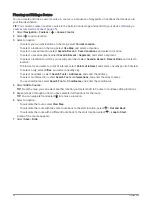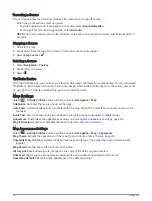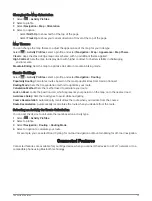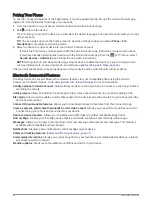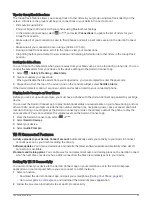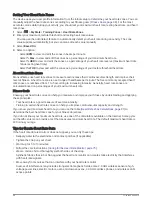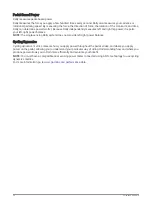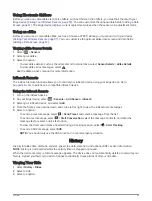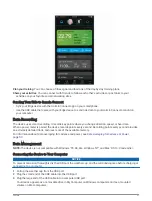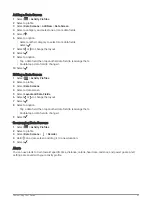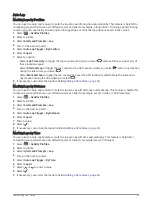
Setting Your Heart Rate Zones
The device uses your user profile information from the initial setup to determine your heart rate zones. You can
manually adjust the heart rate zones according to your fitness goals (
). For the most
accurate calorie data during your activity, you should set your maximum heart rate, resting heart rate, and heart
rate zones.
1 Select
> My Stats > Training Zones > Heart Rate Zones.
2 Enter your maximum, lactate threshold, and resting heart rate values.
You can use the auto detect feature to automatically detect your heart rate during an activity. The zone
values update automatically, but you can also edit each value manually.
3 Select Based On:.
4 Select an option:
• Select BPM to view and edit the zones in beats per minute.
• Select % Max. to view and edit the zones as a percentage of your maximum heart rate.
• Select % HRR to view and edit the zones as a percentage of your heart rate reserve (maximum heart rate
minus resting heart rate).
• Select %LTHR to view and edit the zones as a percentage of your lactate threshold heart rate.
About Heart Rate Zones
Many athletes use heart rate zones to measure and increase their cardiovascular strength and improve their
level of fitness. A heart rate zone is a set range of heartbeats per minute. The five commonly accepted heart
rate zones are numbered from 1 to 5 according to increasing intensity. Generally, heart rate zones are
calculated based on percentages of your maximum heart rate.
Fitness Goals
Knowing your heart rate zones can help you measure and improve your fitness by understanding and applying
these principles.
• Your heart rate is a good measure of exercise intensity.
• Training in certain heart rate zones can help you improve cardiovascular capacity and strength.
If you know your maximum heart rate, you can use the table (
Heart Rate Zone Calculations, page 91
determine the best heart rate zone for your fitness objectives.
If you do not know your maximum heart rate, use one of the calculators available on the Internet. Some gyms
and health centers can provide a test that measures maximum heart rate. The default maximum heart rate is
220 minus your age.
Tips for Erratic Heart Rate Data
If the heart rate data is erratic or does not appear, you can try these tips.
• Reapply water to the electrodes and contact patches (if applicable).
• Tighten the strap on your chest.
• Warm up for 5 to 10 minutes.
• Follow the care instructions (
Caring for the Heart Rate Monitor, page 75
).
• Wear a cotton shirt or thoroughly wet both sides of the strap.
Synthetic fabrics that rub or flap against the heart rate monitor can create static electricity that interferes
with heart rate signals.
• Move away from sources that can interfere with your heart rate monitor.
Sources of interference may include strong electromagnetic fields, some 2.4 GHz wireless sensors, high-
voltage power lines, electric motors, ovens, microwave ovens, 2.4 GHz cordless phones, and wireless LAN
access points.
48
Wireless Sensors

